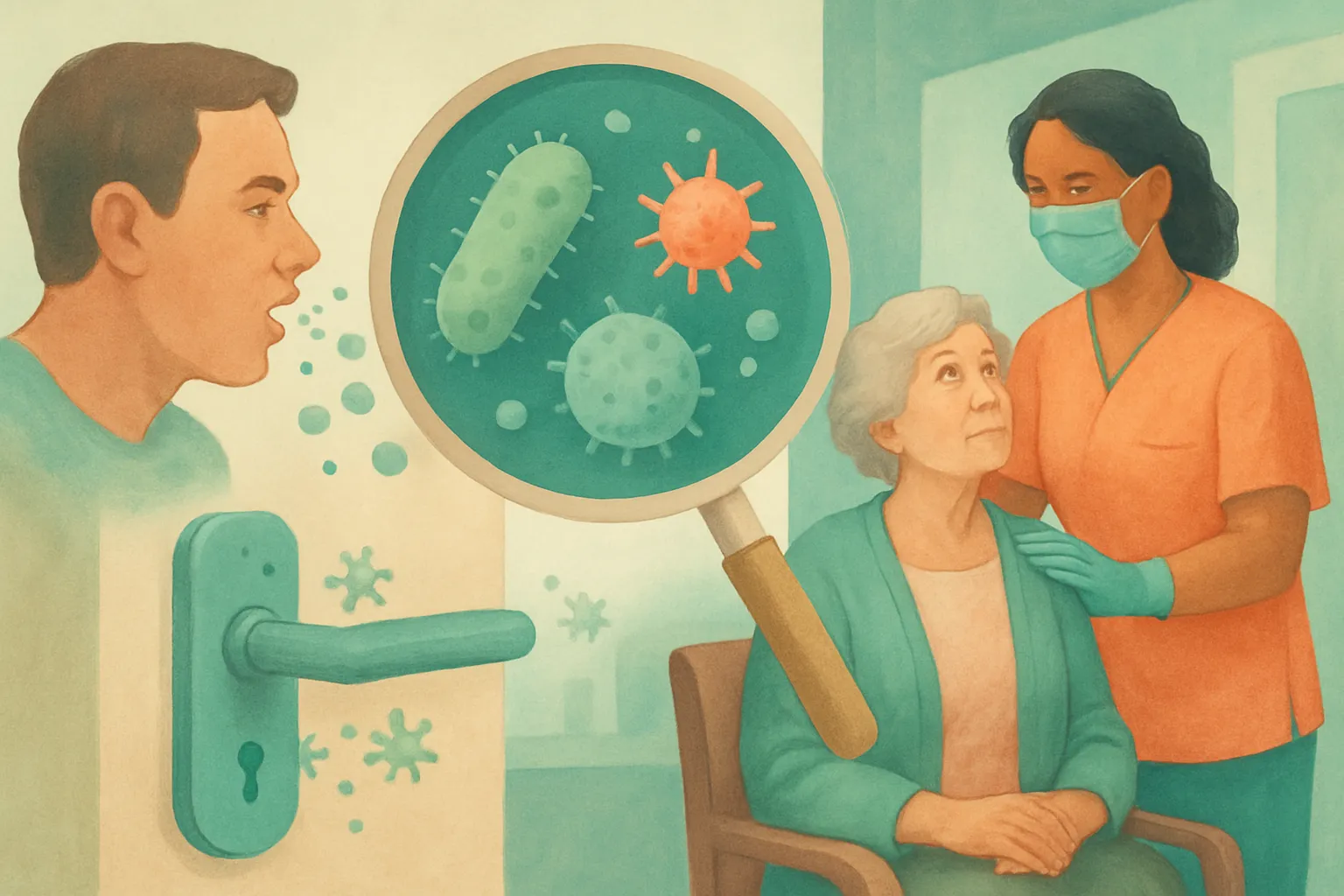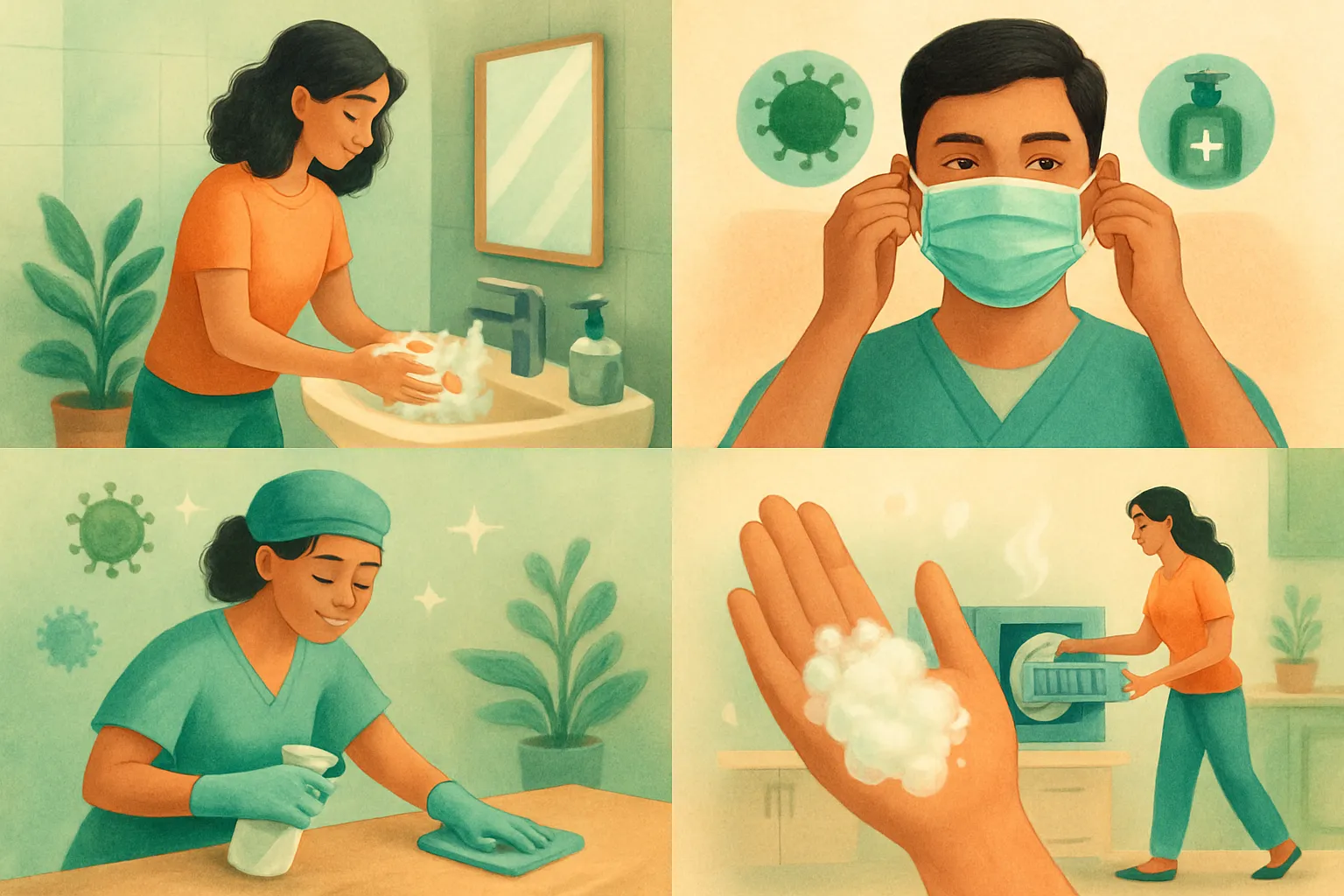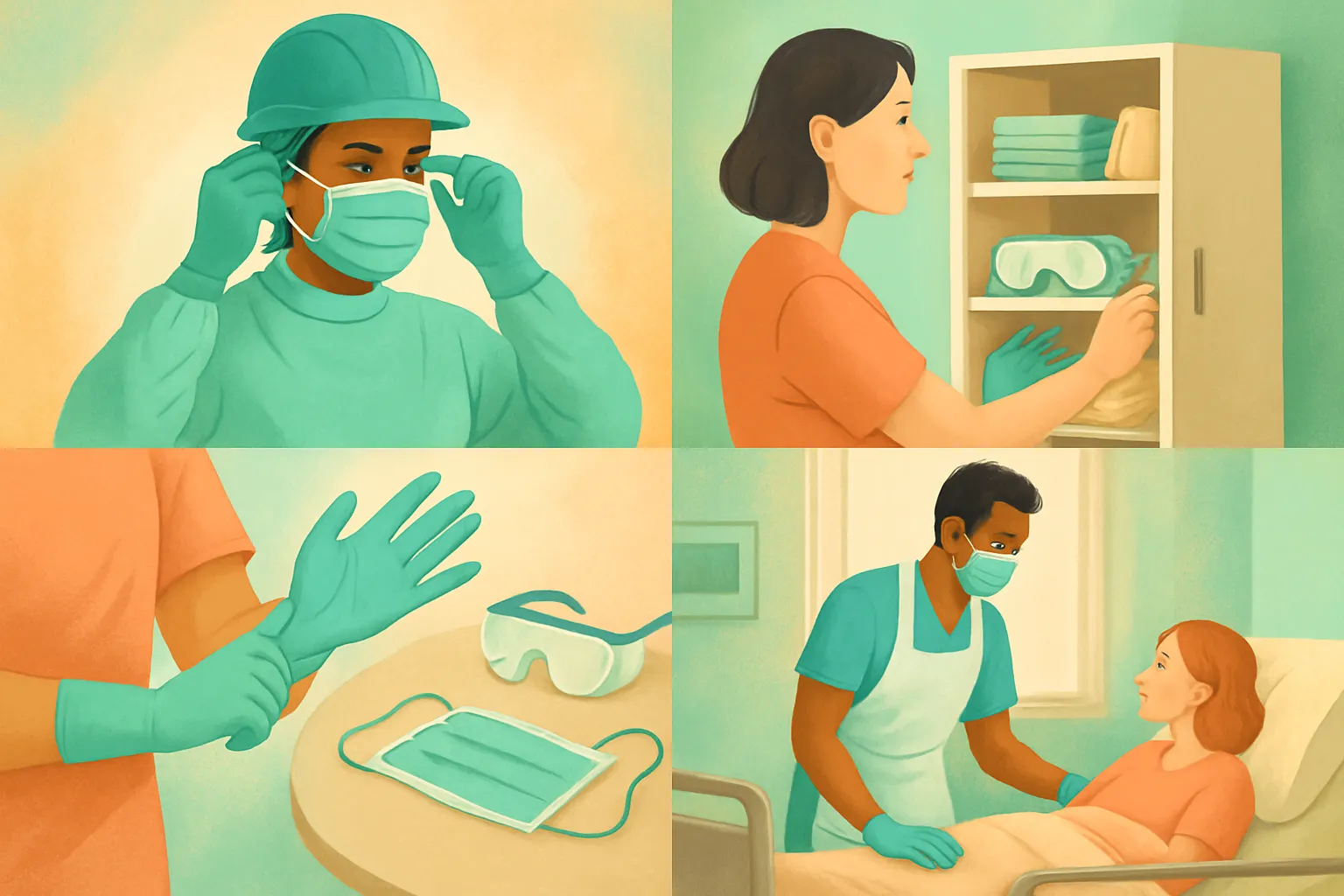Curriculum
- 15 Sections
- 15 Lessons
- 2 Weeks
- Understanding Your Role2
- Duty of Care2
- Equality and diversity2
- Person-centred care and empowerment2
- Communication2
- Privacy and dignity2
- Fluids and nutrition2
- Awareness of mental health, dementia and learning disabilities2
- Safeguarding adults2
- Safeguarding children2
- Basic life support2
- Health and safety2
- Handling information2
- Infection prevention and control2
- Understanding learning disabilities and autism2
Curriculum
Infection prevention and control
Learning Objective:
Understand infection risks and control measures in care settings.
Understanding infection risks

Infections are caused by pathogens, which are microorganisms such as bacteria, viruses, and fungi. These can lead to diseases if they multiply. In health and social care settings, infection risks are high due to close contact, contaminated surfaces, and potentially vulnerable individuals. Key transmission routes include direct contact and through droplets in the air. Recognizing these risks is vital for ensuring safety for both clients and care workers.
- Pathogens
- Contact transmission
- Droplet transmission
- Infection control
Microorganisms that cause disease, such as bacteria, viruses, and fungi.
Spread of infection through direct physical contact with an infected individual.
Spread of infection via droplets expelled when a person coughs or sneezes.
Measures and procedures implemented to prevent the spread of infections.
In-Depth Look into Risk Factors
Risk in Communal Areas – Shared spaces, such as dining halls and activity rooms, require extra cleaning and monitoring to ensure contamination is minimized.
- Ensure regular cleaning of high-touch surfaces.
- Monitor for signs of infection among individuals using the space.
Risk from Procedures – Activities like wound care or handling bodily fluids carry higher risks.
- Use appropriate PPE and follow hygiene protocols rigorously.
- Be vigilant for any signs of infection post-procedure.
Practicing hygiene protocols

Maintaining hygiene protocols is essential in preventing infections, which is the cornerstone of health and safety in care settings. Measures such as handwashing, surface cleaning, and equipment sterilization ensure both the dignity and well-being of those in care. Standard precautions like these protect everyone and minimize health risks.
- Effective Handwashing
- Equipment and Surface Cleaning
- Hand Hygiene
- Surface Decontamination
- Use of Cleaning Tools
- Organisational Guidelines
Wet hands with water. Apply enough soap to cover all surfaces. Scrub for at least 20 seconds, ensuring all parts of the hands are cleaned. Rinse hands thoroughly under running water. Dry hands completely with a clean towel or air dryer.
Apply an appropriate cleaning agent to the surface and let it sit for the recommended time. Wipe the surface with a clean cloth, ensuring all residues are removed. Use separate cloths for different areas to prevent cross-contamination.
Wash hands before and after any procedure, and between caring for different individuals.
Disinfect frequently touched surfaces regularly.
Ensure all cleaning tools, like cloths and mops, are used correctly and stored safely.
Always follow the specified protocols of your workplace regarding hygiene.
Use of personal protective equipment

Personal Protective Equipment (PPE) is an essential tool designed to protect care workers and patients against infections. Different types of PPE, such as gloves, aprons, masks, and eye protection, have specific roles. Proper usage not only safeguards health but also aligns with legal requirements and care quality standards that emphasize risk prevention.
- Donning PPE
- Doffing PPE
- When to wear gloves
- Mask Facts
- Common PPE Mistakes
Perform hand hygiene. Put on a gown, tying it securely. Don a mask, ensuring it covers your nose and mouth. Add protective goggles or face shield if needed. Wear gloves over the gown sleeves to prevent exposure.
Remove gloves, ensuring no skin contact. Untie and remove the gown without touching the front. Perform hand hygiene before removing goggles and mask, handling them from the straps. Perform hand hygiene again after all PPE is removed.
During any procedure involving contact with blood, bodily fluids, or mucous membranes.
Masks should be worn securely, covering both the nose and the mouth, and should be replaced if damp or for extended use.
Touching the front of a mask while wearing it, or not changing gloves between patients.